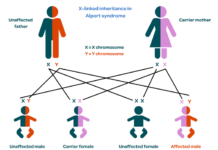India’s youth is one of its greatest strengths. Jayan Jose Thomas urges a shift in conventional wisdom in order to fully realise its potential.
Like many other South Asian nations, India has a young population. Future economic growth is simultaneously made possible by this, but policymakers are faced with the difficulty of generating employment. The World Bank estimates that between 2020 and 2050, the working-age population of South Asia will increase by almost 254 million, or 30.6% of the global increase. 16.5% of the increase will come from just one country: India. China’s population of working age will decrease by about 226 million over the same time span, along with declines in most of the industrialised world.
It is obvious that creating new jobs in India and the rest of South Asia is essential for the region’s and the world’s economic growth and development. However, rising unemployment in India over the past few years has prompted youth rallies across the nation. The number of unemployed persons is rising concurrently with the expansion of the labour force, rising enrollment in education, and a growing outflow of young people from agriculture. Only 16.3% of Indian women aged 15 to 29 were enrolled in schools or colleges in 2005. By 2018, this percentage had risen to 31.0%.
While over 43.5% of India’s workforce earns a living from agriculture and related industries like forestry and fishery, the sector has been losing ground as a result of low production levels and stagnating state investment since the 1990s. Young, low-educated people in rural areas are becoming more eager to leave agriculture, which they perceive as a form of “disguised unemployment.”
The number of unemployed persons is rising as more and more young people leave agriculture and join education.
Will the growing demand for labour in India be absorbed by the lure of new non-agricultural opportunities? Evidently, no.
According to studies based on India’s official employment statistics, particularly the Periodic Labour Force Surveys released by the government, the number of potential non-agricultural workers, or people who could work in industry, construction, or services with the right training, increased by 17.5 million between 2012 and 2018.
As a result, India’s jobless rate has increased significantly, especially among men. With only 23.0% of the workforce in 2018, down from 42.8% in 2005, women withdrew from the labour force in response to the economy’s insufficient production of new employment. The percentage of women who reported being in charge of household chores in their own homes had also increased significantly.
The Indian economy was expanding rather well before it was rocked by the Covid-caused crisis. However, India’s GDP growth dropped to negative rates (-7.3%) in 2020, the first year following the Covid-19 epidemic, leaving millions of its informal sector employees without a means of support. India’s employment dilemma is a result of the manufacturing sector’s sluggish job growth. India’s manufacturing employment shrank from 61.3 million in 2012 to 58.6 million in 2018. In 2020, it increased slightly to 59.8 million. After 2012, micro and small industries accounted for the majority of job losses.
In policy circles, there is a growing belief that India’s labour laws, which prohibit terminating employees or lowering compensation, are too onerous.
What steps are therefore necessary to ensure that India’s economy fully recovers from the crisis caused by the Covid-19 outbreak and to create enough jobs? There is a growing consensus in policy circles that India’s labour regulations regarding terminating employees or lowering compensation are overly onerous and that, with less restrictions, firms would be more eager to grow their operations and hire more staff.
Only 12.3% of India’s 471.0 million workers are regular employees who receive some sort of social security and are, at the very least, somewhat protected by the country’s labour laws. The remaining people are primarily sporadic labourers or small-scale producers who manage in varying degrees of informality. During India’s nationwide lockdown in March 2020 due to the Covid-19 outbreak, one of the heartbreaking scenes was of thousands of underprivileged migrant labourers trekking hundreds of kilometres back to their communities.
Given the dreadful living and working conditions of India’s informal workers, policy recommendations that could weaken their ability to bargain and raise pay are arguably harsh. However, some state governments in India established laws allowing an increase in the amount of daily working hours from eight to twelve in response to the Covid-19 problem. The 29 labour laws in India are currently being consolidated into four labour codes by the Union government, which some observers believe could diminish the position of labour.
At the same time, there is little discussion in the mainstream media and in policy circles about how the majority of India’s labour receives low salaries, which may be reducing aggregate demand and slowing economic growth. The National Sample Survey Organisation conducted a consumption-expenditure survey in 2011–12, which is the most recent data available, and found that the share of the richest 5% in spending on durable goods (like furniture or refrigerators) in urban India was approximately 64%, while the share of the poorest 50% was only 13.4%.
With each passing day, it becomes more and more obvious that the only way to solve India’s issue of economic and employment decline is to increase the sources of demand.
With time, it becomes more and more obvious that the dilemma connected to India’s economic and employment decline can only be resolved by expanding the sources of demand, increasing the poor’s consumption and investment (see box, Pay the payers).
Plans can call for the development of inexpensive housing in rural areas or enterprises related to food processing. An investment like this might have significant multiplier effects. Food processing can increase agricultural incomes, which are still millions of Indians’ main source of support.
The oppressive economic and social arrangements in India have long harmed the working classes, who are due significant changes in their standard of living and working circumstances. This is only possible with a significant increase in government spending in order to increase employees’ salaries, purchasing power, and skill levels. Human development could advance with increased government investment on health and education, which are currently low in India. The nation also needs significant investments in rural infrastructure, agricultural research, public transportation, and other crucial areas.
The growing youth populations in South Asian nations like India and Bangladesh present a possible new source of demand that could reenergize the world economy. To realise this potential, however, measures that support increasing the wages of low-wage employees are needed. These are the kinds of measures that frequently defy accepted economic theory. It is obvious that major policy reform is required if India is to benefit from the advantages that come with having a young population.








































